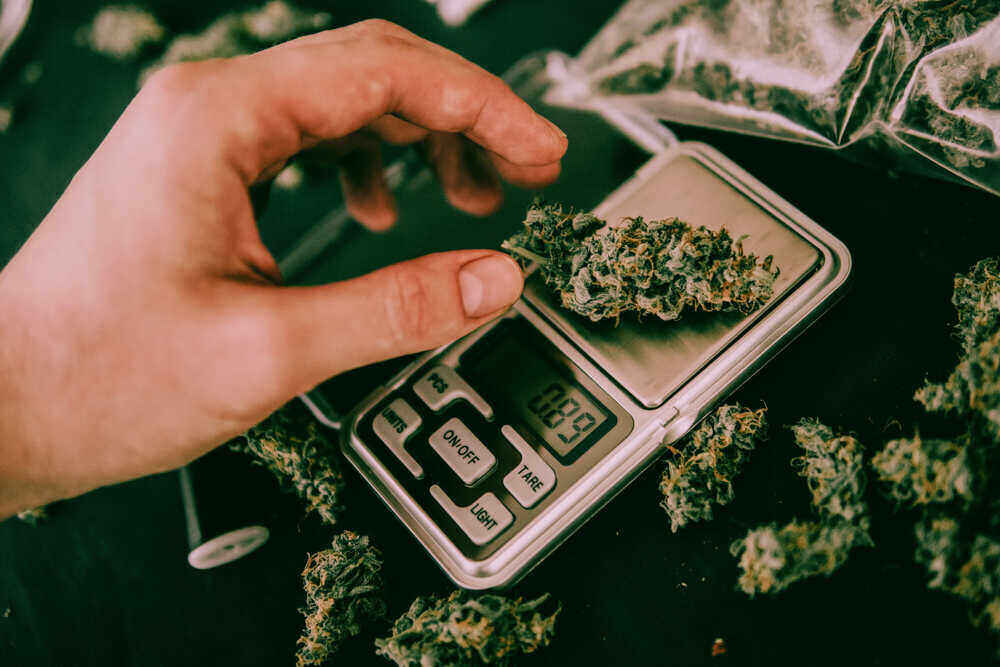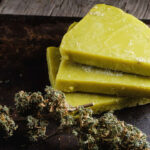The Best Fluffy Pancakes recipe you will fall in love with. Full of tips and tricks to help you make the best pancakes.

How much is a quarter of weed?
If you’re just getting into cannabis, you’ve probably heard people talking about buying a “quarter.” Maybe someone said they picked up a “Q” or asked, “how much for a quad?” But what exactly are they talking about? As someone who’s bred, grown, weighed, and sold more cannabis than I care to count, I can tell you firsthand that understanding weed weights is one of the first steps in becoming a savvy cannabis consumer. Not only will it help you budget smarter, but it’ll also prevent you from getting shorted or overspending. In this article, I’ll walk you through everything you need to know about a quarter of weed—from how much it weighs, how much it costs, how it compares to other weed amounts, and even how long it might last depending on your habits. Whether you’re buying from a dispensary or your mate’s cousin, knowing your measurements makes all the difference.
What exactly is a quarter of weed?
Defining a quarter ounce in grams (7 g / 7.087 g)
A quarter of weed is a measurement of weight, not potency or quality. Specifically, it refers to a quarter of an ounce of cannabis flower. Since one ounce is equal to approximately 28.35 grams, a quarter ounce comes out to about 7.087 grams. However, most people—myself included—just call it 7 grams. When you’re buying a quarter, you’re getting roughly:
- 7 grams of dried cannabis flower
- Enough for 7–14 medium-sized joints, depending on how fat you like to roll
Dispensaries and dealers typically round it to 7 grams for simplicity. If you’re weighing it yourself, don’t be surprised if it’s a hair over or under—humidity, bud structure, and even the grinder you use can create slight fluctuations.

Common slang (quarter, quad, Q) and regional terminology
Cannabis culture thrives on slang, and a quarter ounce is no exception. You’ll hear it called:
- Quarter – the most common term
- Q – short and sweet
- Quad – popular in North America
- Seven – because it’s 7 grams
Different regions might have their preferences. In the UK, I’ve heard folks say “a Q bag,” while in Canada or Cali, “a quad” is the norm. When someone says, “I grabbed a Q,” they’re talking about a 7-gram sack of bud.
How much does a quarter cost?
Typical price range in the US (≈ $50–$100, national average ~$65–70)
The cost of a quarter of weed in the U.S. varies quite a bit depending on where you are, how legal the market is, and the quality of the bud. On average:
- Low-end/mid-grade cannabis goes for $50–$60
- High-end/top-shelf strains are closer to $80–$100
- The national average sits around $65–$70 per quarter
If you’re in a state with legal dispensaries, you’ll probably pay a bit more due to taxes. However, you also get lab-tested product, labeled THC percentages, and proper packaging. If you’re buying in an illegal market, prices might be lower, but you’re taking a gamble on quality and safety.
UK price estimates (≈ £50–£60 or £10/gram)
Over in the UK, cannabis isn’t legal for recreational use, but it’s widely available on the black market. The pricing is usually simple:
- A quarter costs £50–£60
- That’s about £10 per gram, sometimes a bit less if you’ve got a regular hookup
You won’t find fancy packaging or lab tests, but street-level cannabis is often weighed properly. Still, without regulated standards, the strength and quality can vary a lot from one batch to another.
Price variance by region, quality (mid vs top shelf), legality & seasonality
Here’s where it gets interesting. Price isn’t just about weight—it’s influenced by multiple factors:
- Region: Weed is cheaper in places with local grows and dispensaries (like Oregon or Colorado). In prohibition states, the price goes up.
- Quality: A high-THC, terpene-rich, properly cured flower will cost more than dry, harsh mids.
- Legality: Legal markets add tax, but they also stabilize prices with competition and supply.
- Seasonality: Harvest season (late summer/early fall) can flood the market, lowering prices. Off-season scarcity may push them up.
As a grower, I’ve sold the same strain for $60 a quarter one month, and $90 the next—just based on how dry the market was. So prices are always moving.
How a quarter compares to other measurements
Breakdown of other weights: gram, eighth (3.5 g), half (14 g), ounce (28 g)
Let’s break it down:
- 1 gram – enough for 1 big joint or 2 smaller ones
- Eighth (3.5 g) – half of a quarter
- Quarter (7 g) – double an eighth, ¼ of an ounce
- Half (14 g) – 2 quarters, half an ounce
- Ounce (28 g) – standard full bag for regular smokers
Buying in bulk saves money in the long run. A gram might cost £10, but a quarter might only cost £50. That’s £7.14 per gram, not £10.
Per‑gram cost savings when buying a quarter vs smaller units
Here’s a quick breakdown of typical per-gram prices:
- 1 gram – £10
- 3.5 grams (eighth) – £25–£35 (≈ £7–£10 per gram)
- 7 grams (quarter) – £50–£60 (≈ £7–£8.50 per gram)
You save money the more you buy. Think of it like buying toilet paper in bulk—nobody likes paying more per unit just for convenience. If you’re a regular user, a quarter is a smart buy.
Visual/usage comparisons (number of joints/blunts)
A quarter looks like:
- A golf ball-sized clump of buds, maybe a little more depending on density
- Enough for:
- 7 large joints (1g each)
- 14 smaller joints (0.5g each)
- 3–4 big blunts
If you’re vaping or using a bowl, it’ll last longer. I find a quarter can stretch for 1–2 weeks depending on your tolerance and how heavy-handed you are.
How long does a quarter last and how it’s used
Typical consumption rates (1 g/day = ~1 week; 0.5 g/day = ~2 weeks)
If you smoke about 1 gram per day, your quarter will last you roughly a week. If you use half a gram a day, it’ll stretch to about two weeks.
It really depends on your method of consumption. Joints use more than bowls. If you’re microdosing edibles or hitting a vape pen, you might make 7 grams last even longer.
Here’s a rough guide:
- Light user: 0.3g/day → lasts 3 weeks
- Average user: 0.5g–1g/day → lasts 1–2 weeks
- Heavy user: 2g/day → gone in 3–4 days
Applications beyond smoking—edibles, tinctures
If you’re not smoking, 7 grams goes a long way in the kitchen:
- Edibles: You can make a full batch of brownies or cookies using a quarter. Just decarb the flower, infuse it into butter or oil, and bake.
- Tinctures: Soak the flower in high-proof alcohol and make your own cannabis drops.
- Capsules or RSO: For medical use, a quarter can be processed into potent, long-lasting medicine.
When I make cannabutter, 7 grams is the sweet spot for a batch that’s strong but not overwhelming.
Who buys quarters? (moderate, regular, split-use consumers)
In my experience, quarters are ideal for:
- Moderate daily users who smoke or vape regularly
- People who like variety—you can buy two different eighths and mix it up
- Edible makers—plenty of flower for home infusions
- Couples or friends sharing a stash
If you’re trying to find a balance between price and quantity, a quarter hits that sweet middle ground. Not too little, not too much.
Factors affecting price and value
Quality & potency (top‑shelf vs mid‑shelf)
The quality of your weed plays a big role in pricing. Top-shelf cannabis is:
- Grown indoors with dialed-in environments
- Hand-trimmed and slow-cured
- Rich in trichomes, terpenes, and THC
You’ll pay more for that, but it’s worth it. Mids might be outdoor-grown, rough-trimmed, or less potent, but they’re still smokable.
I grow both kinds—some strains are boutique and demand a higher price, others are mass-grown workhorses. Know what you’re paying for.
Regional legality & supply/demand dynamics
Where you live shapes the market:
- Legal states/countries have competition, price wars, and tax—prices can be higher or lower
- Prohibition areas have inflated street prices and limited choice
- Rural areas might have fewer suppliers
- Harvest season brings surplus and discounts
As a grower, I’ve seen prices drop 30% during harvest months because supply floods the market. In winter, that same quarter can cost more.
Packaging, branding, dispensary vs street pricing
Fancy packaging, celebrity brands, and boutique dispensaries all add cost. That £60 quarter might have:
- Glass jar packaging
- THC/CBD breakdown
- Strain lineage info
- Designer branding
On the street, you might get the same weight in a sandwich bag. No frills, but cheaper.
Tips when buying a quarter
How to verify weight (use a scale)
Never just eyeball it. Use a digital scale and:
- Tare the container before weighing
- Check for 7.0–7.2g range
- Look for signs of fluff or stem weight
I always recommend buying a small jewelry scale—they’re cheap and save you from getting ripped off.

Choosing strain & THC/CBD content considerations
Not all quarters are created equal. Before you buy, ask:
- What’s the THC percentage? (18–25% is standard for good flower)
- Is it indica, sativa, or hybrid?
- Any noticeable terpenes or effects?
- What do you want—chill, creative, focused, sleepy?
As a grower, I always advise matching your strain to your goal. Don’t just go for the highest THC—terpenes matter too.
Legal limits & safe purchasing practices
In most legal markets:
- You can possess 1 ounce (28g)—a quarter is well under that
- Always buy from licensed dispensaries if possible
- Don’t transport across borders or state lines
Even in illegal markets, use discretion. Don’t flash it, don’t sell it, and store it in an airtight jar somewhere cool and dark.
Conclusion
Knowing how much a quarter of weed is—and what it costs—helps you become a more informed and confident cannabis user. Whether you’re rolling joints, making edibles, or simply comparing prices, understanding the weight, value, and usage goes a long way. As someone who’s been around the grow rooms and trim tables for years, I always say: learn the basics, weigh your bud, and choose strains that suit your needs. A quarter is a versatile amount that fits most users’ routines without being too little or too much. Now that you know what to expect, you’re ready to shop smarter and enjoy your cannabis experience with clarity.




